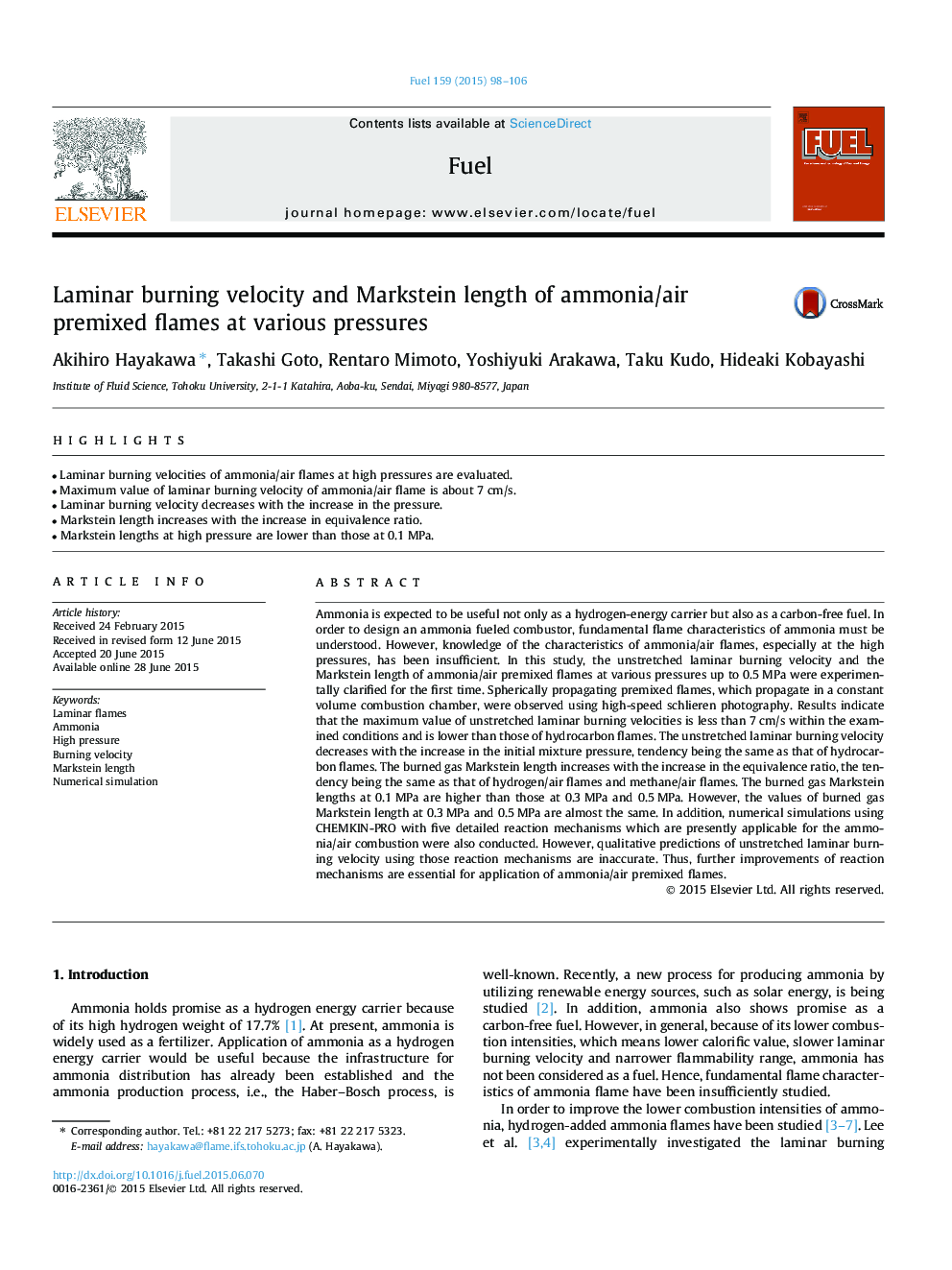| Article ID | Journal | Published Year | Pages | File Type |
|---|---|---|---|---|
| 6634569 | Fuel | 2015 | 9 Pages |
Abstract
Ammonia is expected to be useful not only as a hydrogen-energy carrier but also as a carbon-free fuel. In order to design an ammonia fueled combustor, fundamental flame characteristics of ammonia must be understood. However, knowledge of the characteristics of ammonia/air flames, especially at the high pressures, has been insufficient. In this study, the unstretched laminar burning velocity and the Markstein length of ammonia/air premixed flames at various pressures up to 0.5Â MPa were experimentally clarified for the first time. Spherically propagating premixed flames, which propagate in a constant volume combustion chamber, were observed using high-speed schlieren photography. Results indicate that the maximum value of unstretched laminar burning velocities is less than 7Â cm/s within the examined conditions and is lower than those of hydrocarbon flames. The unstretched laminar burning velocity decreases with the increase in the initial mixture pressure, tendency being the same as that of hydrocarbon flames. The burned gas Markstein length increases with the increase in the equivalence ratio, the tendency being the same as that of hydrogen/air flames and methane/air flames. The burned gas Markstein lengths at 0.1Â MPa are higher than those at 0.3Â MPa and 0.5Â MPa. However, the values of burned gas Markstein length at 0.3Â MPa and 0.5Â MPa are almost the same. In addition, numerical simulations using CHEMKIN-PRO with five detailed reaction mechanisms which are presently applicable for the ammonia/air combustion were also conducted. However, qualitative predictions of unstretched laminar burning velocity using those reaction mechanisms are inaccurate. Thus, further improvements of reaction mechanisms are essential for application of ammonia/air premixed flames.
Related Topics
Physical Sciences and Engineering
Chemical Engineering
Chemical Engineering (General)
Authors
Akihiro Hayakawa, Takashi Goto, Rentaro Mimoto, Yoshiyuki Arakawa, Taku Kudo, Hideaki Kobayashi,
